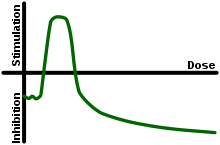OK - now there's an article on Dr Stanislaw Burzynski's cancer fighting protocol - his name should be familiar to anyone who has looked into alternative medical treatment for cancer. This article also references GcMAF.
http://anh-europe.org/news/how-maverick-cancer-treatments-are-suppressed-by-the-mainstream
Updated: 30 Jan 2013
Dr Stanislaw Burzynski may be on the verge of a hard-fought breakthrough for his
antineoplaston treatment – and his struggles offer an object lesson about the trials in store for another promising therapy, Gc-MAF.
The high-profile Dr B
You may have heard of Dr Stanislaw Burzynski, the discoverer of antineoplastons. Not only has his work received considerable media and blogosphere attention, both favourable and hostile, but he’s already been the topic of one documentary with a sequel in the works. There is a reason for his visibility: unlike so many cancer researchers who choose to operate outside the mainstream model of ‘cut, poison, drug and burn’, Dr Burzynski has stood firm against everything that has been thrown at him. What’s more, he appears to be winning.
What are antineoplastons?
In short, they are protein components, known as
peptides, that Dr Burzynski believes have a twofold role in cancer prevention. In his own words, “The human body has...molecular switches, some of which turn off oncogenes, and others which turn on tumor-suppressor genes. These switches are called
antineoplastons, which are naturally occurring peptides and amino acid derivatives in the blood and urine that the human body naturally uses to control cancer growth...The name “antineoplastons” comes from their function in controlling neoplastic or cancerous cells: i.e., anti-neoplastic cell agents.”
Antineoplaston landmarks
Dr Burzynski’s story is long, involved – and breathtaking. In short, it’s a tale of dogged determination by one man to bring a highly promising cancer treatment to market, in the face of
a US government campaign of intimidation, harassment, sabotage and attempted patent theft. To simplify things, we’ve put together a list of major events in Dr Burzynski’s struggle to bring antineoplastons to public attention and availability, which you can download here.
[...]
Gc-MAF: antineoplastons mark II?
Back in 1993, Nobuto Yamamoto, then working at Temple University School of Medicine in Philadelphia, PA, USA, first described a remarkable molecule. His paper reported the conversion of vitamin D3 binding protein (DBP, known in humans as Gc) into a potent macrophage-activating factor (MAF), known as Gc-MAF. Macrophages are a key part of the human immune system with two roles: to engulf and destroy pathogens and cellular debris, and to recruit other immune cells to respond to the pathogen.
Macrophages are crucial to both innate, or non-specific, immunity and adaptive, or specific, immunity. Under normal circumstances, Gc-MAF is upregulated when the immune system detects a threat, ‘activating’ macrophages so that they single-mindedly pursue pathogens. Cancer cells, a prime target of macrophages, are clever little critters that secrete an enzyme – alpha-N-acetylgalactosaminidase or nagalase – that inactivates Gc-MAF, thus preventing macrophages from becoming activated and protecting cancer cells. Administration of Gc-MAF is proposed to bypass nagalase, stimulating macrophages to become activated and attack tumour cells. In other words, it’s a potent immunomodulator, rather like antineoplastons.
So why haven’t most of us heard of it?
Unlike antineoplastons, however, Gc-MAF hasn’t had the benefit of a single patent owner – as a natural molecule, it cannot be patented without being modified – with the will and resources to push it under the noses of the public and health authorities. Dr Yamamoto has run small human trials in breast, prostate and colorectal cancers, with promising results. However, he is by no means alone, as David Noakes is at pains to point out: “There’s better research than Dr Yamamoto’s out there these days, and it’s all listed on our website,” he says.
David Noakes might just be the person to bring Gc-MAF into the mainstream. He’s the CEO of Immuno Biotech Ltd. and spokesperson for First Immune Gc-MAF, a project he describes as, “PhD and BSc biochemists and biomedical scientists...with external doctors, oncologists and scientists who kindly provide advice, committed to bringing some of the increasing number of published but relatively unused medical cures to as many people as we can.” At the moment, Noakes and his colleagues are supplying Gc-MAF to 30 countries where it is legal, via a network of “around 300” doctors. Their Gc-MAF is made to extremely high standards, and is being used in ongoing clinical research by Noakes’ collaborators and others. Their ultimate goal is to, “Build the case that GcMAF is effective for various illnesses, which will help to make it available to the public”.
The thrust of this article is less about antineoplastons than it is the suppression of non-conventional cancer treatments by the government.



 ) almost anything dairy. When I stopped with cow milk [and joint pain stopped), I tried goat milk and tolerated/enjoyed it too though I still came away with the symptoms from it that you mention.
) almost anything dairy. When I stopped with cow milk [and joint pain stopped), I tried goat milk and tolerated/enjoyed it too though I still came away with the symptoms from it that you mention. 